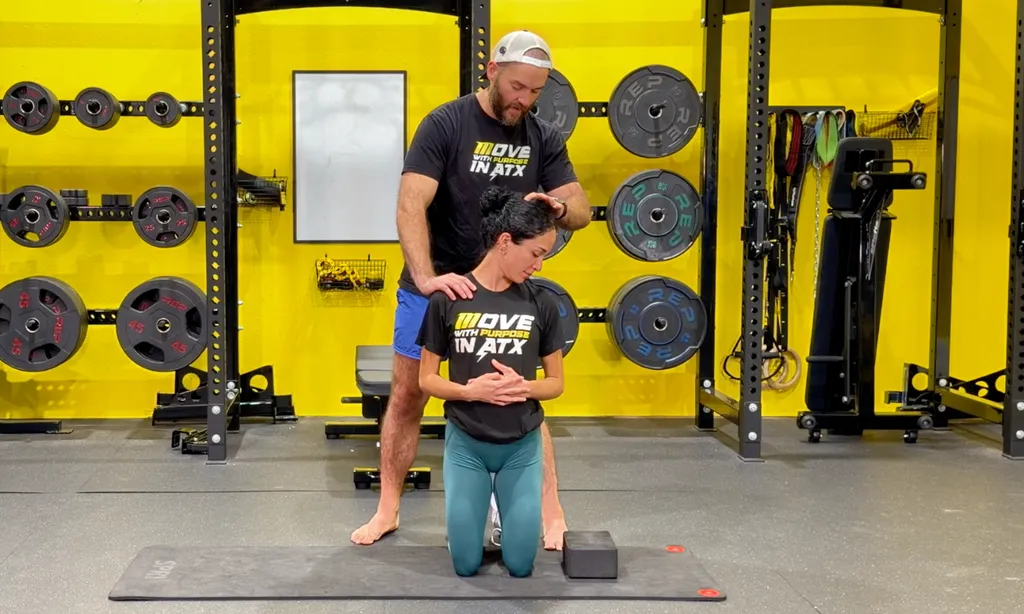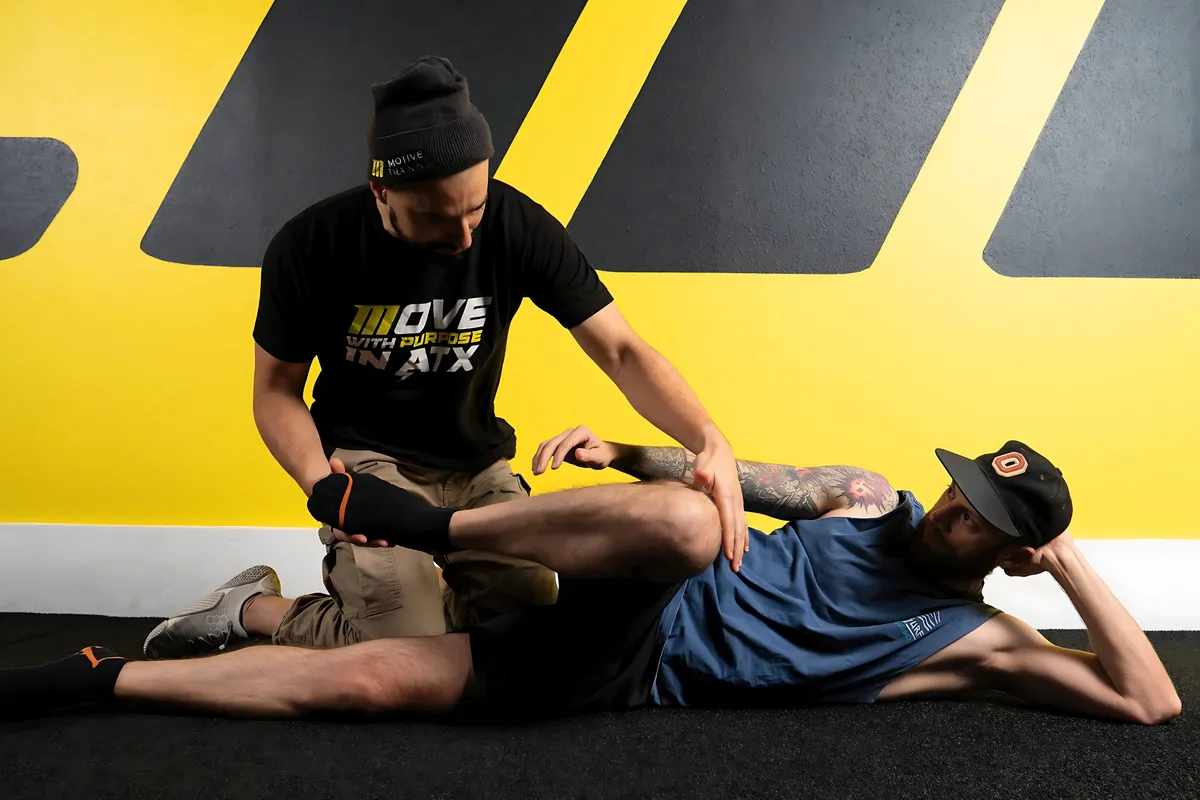Desk Job Pain in Austin: A Practical Mobility Plan for Your Neck, Back, and Hips
November 5, 2025 | Pain Management

For thousands of Austin professionals, long hours at a desk are part of the job. Tech workers, designers, and entrepreneurs often spend eight or more hours in the same position, day after day. It’s no wonder so many people feel tension in their neck, stiffness in their spine, or tightness in their hips.
But here’s the truth: it’s not just sitting that causes pain—it’s staying still. Movement variability, not perfect posture, is the key to staying pain-free.
At Motive Training, we see this every day. People come in thinking they need a posture correction device or a new ergonomic chair, when what they really need is to reclaim control of their joints.
The Real Cause of Desk Job Pain
Our bodies adapt to whatever positions we spend the most time in. Sitting for hours teaches your nervous system that this is “normal.” Over time, joints start to lose motion, muscles lose tension control, and you feel the consequences:
- Tight hips that make standing or walking uncomfortable.
- Upper back stiffness that limits shoulder motion.
- A neck that constantly feels tight or strained.
The pain is a symptom of reduced movement options, not a single bad posture. As discussed in The Mobility Blog’s article on posture, research shows there’s no one “ideal” alignment. What matters most is how often you change positions and how well your joints move.
Mobility training helps you do exactly that—restore movement variety and build control over every range your joints should have.
Why Posture Correction Alone Falls Short
Posture correction devices, back braces, and “perfect sitting” guides all share one flaw: they focus on stillness. You can’t fix pain by holding a new static position; you have to teach your body to move again.
At Motive Training, we focus on helping you:
- Reconnect with your spine, hips, and shoulders through Controlled Articular Rotations (CARs).
- Strengthen weak ranges of motion using PAILs/RAILs and other Functional Range Conditioning (FRC®) techniques.
- Integrate those improvements into daily habits—so your body adapts to movement, not immobility.
It’s not posture training; it’s movement training.
Learn more about our approach in You Need a Mobility Trainer.
How Austin’s Desk Workers Can Combat Pain
You don’t need to overhaul your workspace or buy expensive equipment. What you need are consistent, intentional mobility inputs—and a clear understanding of what your body actually needs.
At Motive Training, that starts with assessment. Every neck, spine, and hip behaves differently depending on years of posture, injury history, and lifestyle. Instead of giving everyone the same routine, we identify which joints have lost motion or control, then build targeted strategies to restore balance.
For most desk workers, the goals are straightforward:
- Regain neck control so the shoulders and upper back don’t overcompensate.
- Rebuild thoracic movement to make breathing, posture, and shoulder motion feel natural again.
- Restore hip function so standing, walking, and lifting stop feeling restricted.
The process isn’t about chasing stretches—it’s about improving how each joint moves and how your body coordinates those movements together. Once you understand which areas need attention, mobility work becomes far more effective than guessing at generic “tightness fixes.”
Learn more about how we individualize this process through our Mobility Coaching in Austin.
Why Mobility Training Works When Other Methods Don’t
Unlike generic stretching routines, mobility training combines:
- Assessment: understanding how each joint moves before designing a plan.
- Strength: building tension and control, not just flexibility.
- Consistency: small daily practices that reinforce long-term change.
This approach helps our clients stay out of pain without needing constant massage, adjustments, or painkillers. It’s the difference between relief that fades and results that last.
If you haven’t experienced an individualized mobility assessment, see what’s involved in our Improve Posture in Austin overview.
The Austin Advantage: Move Better, Feel Stronger
Austin’s active culture makes it easy to stay moving—if your body allows it. From weekend paddleboarding to hikes on the Greenbelt, our city rewards mobility. That’s why so many local professionals work with our trainers to build resilience that transfers from the desk to the trail.
Our programs emphasize functional movement training—not random stretching, but targeted work designed to help you move pain-free again.
When you train with us, you’re not just fixing a stiff back. You’re building the capacity to do more of what you love, without discomfort.
FAQs: Desk Job Pain & Mobility Training
Do I need special equipment?
No. Most mobility drills use your bodyweight. We’ll teach you how to move effectively anywhere, including your office.
How long before I feel better?
Most clients notice less stiffness within two to three sessions. Long-term change happens as you consistently retrain your movement patterns.
Can I combine mobility training with strength workouts?
Yes. It enhances your performance in the gym by improving joint control and range of motion.
Ready to Work Pain-Free Again?
If you’re in Austin and ready to move without pain, start with an individualized assessment at Motive Training. Our trainers will design a plan that improves mobility, builds strength, and helps you move better every day
Written by
Brian Murray, FRA, FRSC
Founder of Motive Training
We’ll teach you how to move with purpose so you can lead a healthy, strong, and pain-free life. Our headquarters are in Austin, TX, but you can work with us online by signing up for KINSTRETCH Online or digging deep into one of our Motive Mobility Blueprints.

